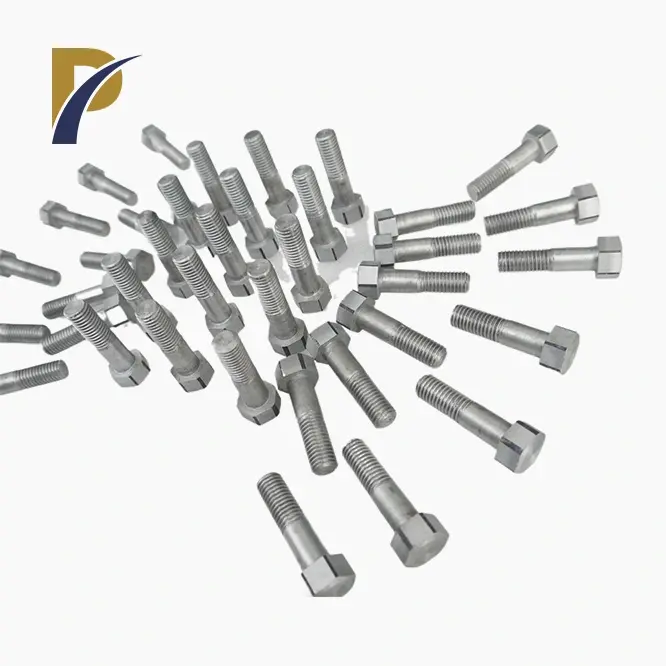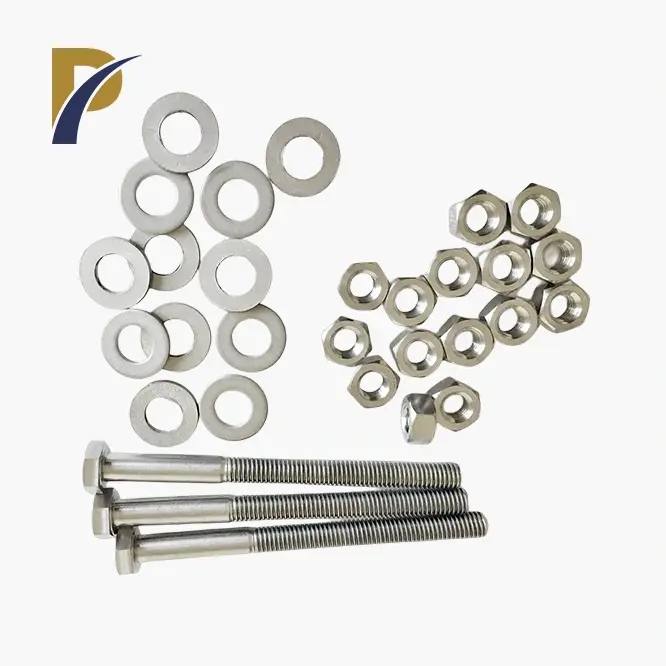Understanding Molybdenum Threaded Rods
Composition and Properties
Molybdenum threaded rods are fabricated from high-purity molybdenum, a refractory metal renowned for its exceptional strength and stability at elevated temperatures. These rods boast a melting point of approximately 2,623°C (4,753°F), making them ideal for use in extreme thermal environments. The inherent properties of molybdenum, including its low thermal expansion coefficient and excellent thermal conductivity, contribute to the rods' reliability in demanding applications.
Manufacturing Process
The production of high-purity molybdenum threaded rods involves a meticulous process. It begins with the refinement of molybdenum ore to achieve the desired purity levels, often exceeding 99.95%. The refined molybdenum is then subjected to powder metallurgy techniques, including pressing and sintering, to create dense, uniform billets. These billets undergo hot working processes, such as extrusion or forging, to form rod-shaped preforms. The final step involves precision machining to create the threaded profile, adhering to specific dimensional and tolerance requirements.
Applications and Industries
Molybdenum threaded rods find extensive use across various industries due to their unique combination of properties. In the semiconductor industry, they serve as critical components in high-temperature furnaces and wafer processing equipment. The aerospace sector utilizes these rods in rocket nozzles and propulsion systems, capitalizing on their strength-to-weight ratio and heat resistance. Additionally, molybdenum threaded rods play vital roles in nuclear power plants, chemical processing facilities, and advanced research laboratories, where their corrosion resistance and thermal stability are invaluable.
 |
 |
ASTM Standards for Molybdenum Threaded Rods
ASTM B387: Standard Specification for Molybdenum and Molybdenum Alloy Bar, Rod, and Wire
ASTM B387 serves as a foundational standard governing the production of molybdenum threaded rods. It specifies detailed requirements for chemical composition, mechanical strength, and dimensional tolerances, ensuring that the rods meet stringent industry expectations. Compliance with ASTM B387 guarantees that molybdenum threaded rods maintain high purity levels, proper tensile strength, and adequate elongation, making them suitable for high-temperature and critical-performance environments in various advanced applications.
ASTM E8: Standard Test Methods for Tension Testing of Metallic Materials
ASTM E8 provides standardized procedures for tension testing metallic materials, including molybdenum threaded rods. Though not exclusive to molybdenum, this test is vital for verifying mechanical properties such as yield strength, ultimate tensile strength, and elongation. By applying this standard, manufacturers can assess how molybdenum threaded rods will perform under real-world stress and strain conditions, especially in load-bearing or thermal cycling environments, ensuring structural integrity and application reliability.
ASTM E1409: Standard Test Method for Determination of Oxygen and Nitrogen in Titanium and Titanium Alloys by Inert Gas Fusion
ASTM E1409, while developed primarily for titanium, is also relevant to molybdenum and its alloys. It outlines procedures for measuring interstitial elements like oxygen and nitrogen using inert gas fusion. These elements, if not controlled, can degrade molybdenum's performance at high temperatures. For high-purity molybdenum threaded rods, adherence to ASTM E1409 is crucial to maintaining the desired purity and ensuring that the rods perform consistently in demanding thermal and chemical environments.
Quality Control and Performance Evaluation
Non-Destructive Testing Methods
Ensuring the structural integrity of molybdenum threaded rods involves advanced non-destructive testing (NDT) techniques that identify internal and surface flaws without damaging the material. Ultrasonic testing is particularly effective in detecting internal cracks, voids, or inclusions. X-ray fluorescence (XRF) spectroscopy is used to confirm the material’s elemental composition and ensure compliance with purity standards. Additionally, eddy current testing is employed to locate surface irregularities and measure variations in conductivity, ensuring uniformity along the rod's entire length.
Mechanical and Thermal Testing
Mechanical and thermal testing are vital for verifying the performance and reliability of molybdenum threaded rods under demanding conditions. Tensile testing provides essential information on yield strength, ultimate tensile strength, and elongation, offering insights into the rod’s durability under stress. Hardness testing, using scales like Vickers or Rockwell, evaluates resistance to indentation and deformation. For high-temperature applications, creep testing assesses the rod’s ability to resist deformation over extended periods at elevated temperatures, ensuring long-term structural stability in thermal environments.
Corrosion Resistance Evaluation
Despite molybdenum's natural resistance to corrosion, targeted testing is necessary to validate performance in specific environmental conditions. Electrochemical testing techniques, such as potentiodynamic polarization, help quantify corrosion rates and susceptibility in various chemical media. Immersion tests, which involve submerging samples in aggressive solutions over extended durations, provide insights into long-term material stability and degradation patterns. These evaluations ensure that molybdenum threaded rods maintain performance and reliability in chemically harsh or highly acidic or alkaline industrial environments.

Conclusion
Molybdenum threaded rods represent a pinnacle of engineering materials, combining the exceptional properties of high-purity molybdenum with precision threading for demanding applications. The rigorous ASTM standards governing their production and testing ensure consistency, reliability, and performance across diverse industries. As technological advancements continue to push the boundaries of material capabilities, molybdenum threaded rods will undoubtedly play an increasingly critical role in shaping the future of high-temperature and corrosion-resistant technologies.
Contact Us
For more information about our high-quality molybdenum threaded rods and other non-ferrous metal products, please contact us at info@peakrisemetal.com. Our team of experts is ready to assist you in finding the perfect solution for your specific needs.
